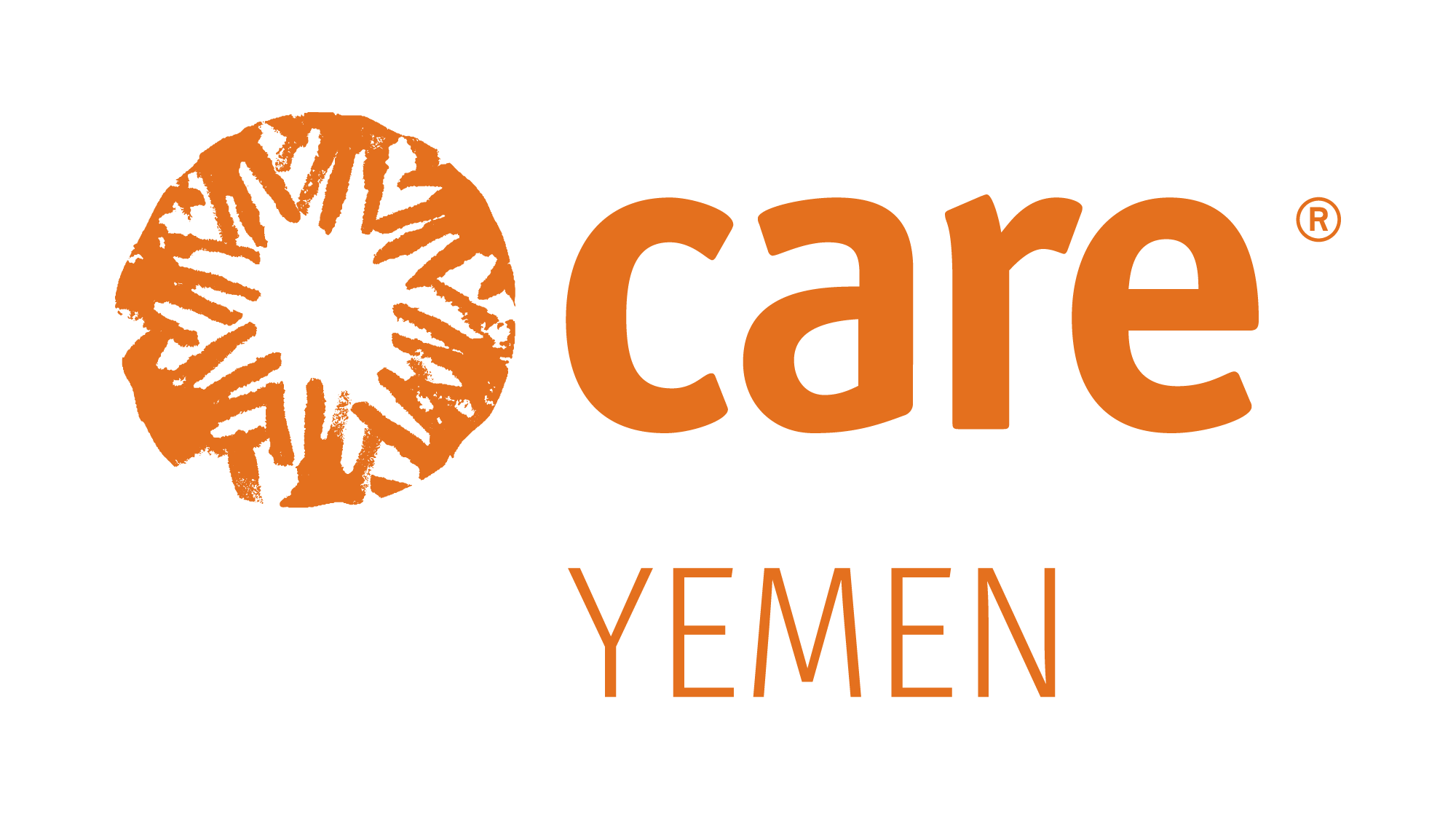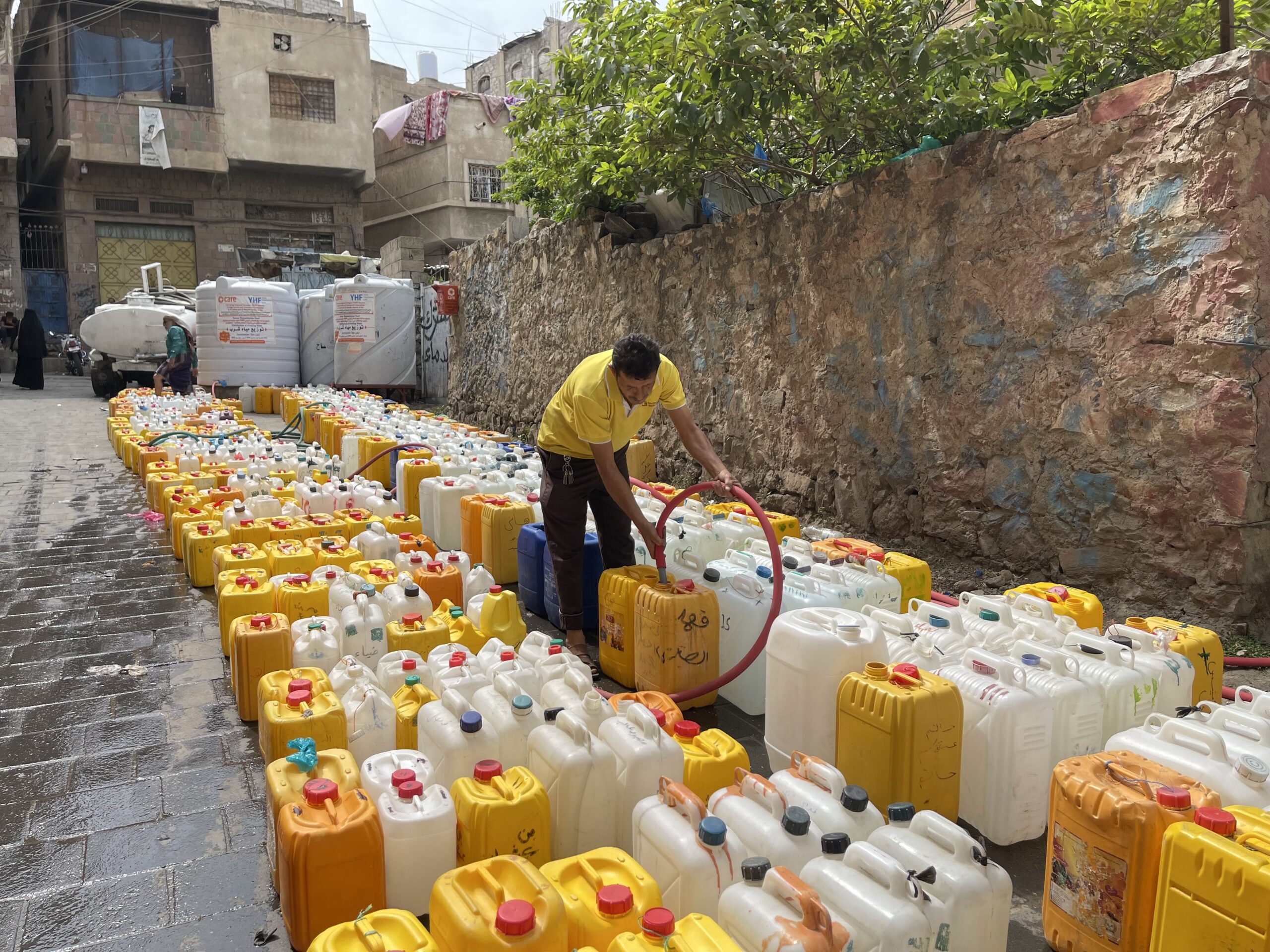In Yemen, 12.4 million people encounter difficulties in accessing a water supply that meets the necessary quality standards to prevent diseases. Additionally, 20.4 million people lack sufficient access to an adequate quantity of water for essential daily activities such as drinking, bathing and cooking. An estimated 300,000 individuals, and the communities in which they live, will continue to be exposed to risk factors of water-borne diseases, increasing risks of outbreak. Without durable solutions and a strong development framework, it is also anticipated that water, sanitation and hygiene (WASH) infrastructures, particularly water supply networks, will continue to deteriorate.
Shaker is a 42-year-old father of four children. He lives in Al Qahirah district of Taiz Governorate which has been suffering from a long-standing water crisis. This has worsened across the governorate since the 1990s with urban expansion and high population growth. In addition, as a result of the outbreak of armed conflict and the failure of operationalizing strategic projects such as the Mokha desalination project, the situation has continued to deteriorate. Even prior to the outbreak of the war in April 2015, Taiz Governorate was among areas in the country with the highest level of water stress and scarcity, with water reaching homes every 40 days. However, the war further exacerbated challenges to the population and the governmental water corporation stopped pumping water into homes. In Taiz city, as the armed conflict continued for more than seven years, most of the main activities stopped. With water no longer being provided by the local establishment, most residents relied on the purchase of water transported by truck at high prices – equivalent to triple its usual value. As the ongoing siege has continued, and water pumping ceased, Al-Dhabab area – a western suburb of Taiz – became the only source of water for the city’s citizens. This has resulted in excessive pressure on water wells in Al- Dhabab, doubling the price of water for users such as Shaker.
Shaker works in a small shop and his low level of income means he is not able to provide for his family’s essential needs. He holds a bachelor’s degree but has not been able to find steady employment with a sufficient income. The economy in Yemen is faring extremely badly, aggravated by the conflict which is now approaching its tenth year. More than 80 per cent of Yemenis currently live below the poverty line, some on less than 50 cents a day, especially in the marginalized communities. Up to 40 per cent of households in Yemen are estimated to have lost their primary source of income. “Life was simple. Prior to the war, I was able to provide all needs for my family. Now, it’s hard to me to provide them with even the essentials, especially after currency collapse,” says Shaker.
Between January and December 2023, the Yemeni Rial (YER) depreciated from 1,230 YER/USD to 1,515 YER/ USD, the poorest rate since December 2021. Due to the dependence on imports, the exchange rate plays a significant role in influencing price fluctuations, particularly in areas under the control of the internationally recognized government (IRG), with vendors often linking prices to the exchange rate. Risks to Yemen’s economic development remain high. “Due to the high price of oil, the water price also got higher which meant we couldn’t afford it. We’ve been forced to use rainwater instead. Many people in the area were infected with cholera, which sometimes caused deaths. Two months ago, one of our neighbors died due to severe diarrhea,” says Shaker.
To enhance access to safe and adequate water for the vulnerable households, CARE, with funding from Yemen Humanitarian Fund (YHF) conducts water trucking activities, targeting vulnerable households in cholera prone areas, in accordance with the WASH Cluster protocol. CARE distributes 3,375,000 litres of water per month. Through the activity, 15,000 individuals will have access to safe and clean water. “We are blessed to have clean water. We don’t have to worry about procuring water anymore. It’s no longer a concern for us,” says Shaker.
“Before this project, it was hard and challenging to have safe water. The high cost of clean water meant we didn’t always have enough and using unsafe water left many people sick. Now, we can get clean water whenever we need. Water is the basis of life, and it has been a huge relief for myself, my family and my neighbors. I hope the project continues so we will not be forced to use unclean water again,” says Shaker.


